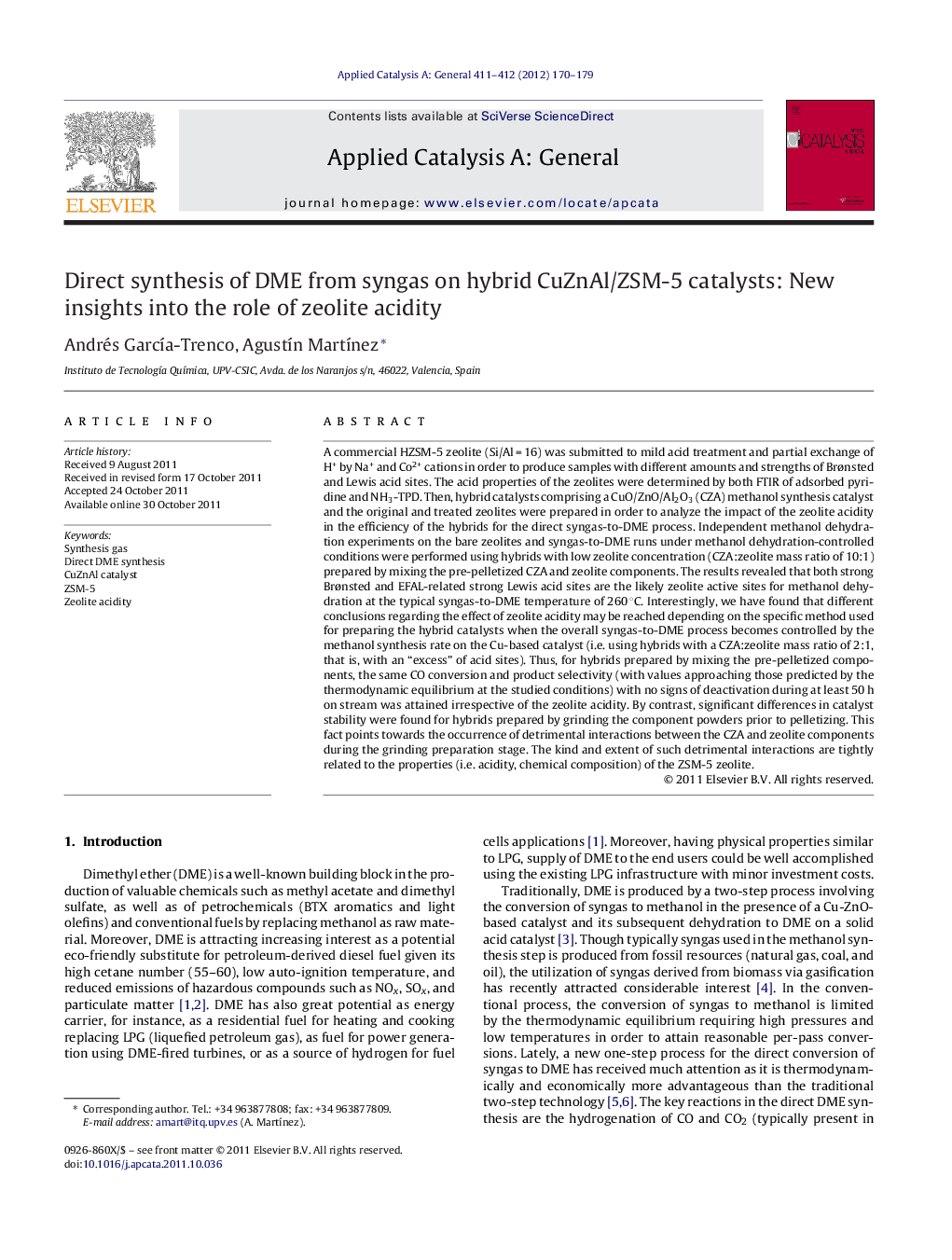| کد مقاله | کد نشریه | سال انتشار | مقاله انگلیسی | نسخه تمام متن |
|---|---|---|---|---|
| 41283 | 45883 | 2012 | 10 صفحه PDF | دانلود رایگان |

A commercial HZSM-5 zeolite (Si/Al = 16) was submitted to mild acid treatment and partial exchange of H+ by Na+ and Co2+ cations in order to produce samples with different amounts and strengths of Brønsted and Lewis acid sites. The acid properties of the zeolites were determined by both FTIR of adsorbed pyridine and NH3-TPD. Then, hybrid catalysts comprising a CuO/ZnO/Al2O3 (CZA) methanol synthesis catalyst and the original and treated zeolites were prepared in order to analyze the impact of the zeolite acidity in the efficiency of the hybrids for the direct syngas-to-DME process. Independent methanol dehydration experiments on the bare zeolites and syngas-to-DME runs under methanol dehydration-controlled conditions were performed using hybrids with low zeolite concentration (CZA:zeolite mass ratio of 10:1) prepared by mixing the pre-pelletized CZA and zeolite components. The results revealed that both strong Brønsted and EFAL-related strong Lewis acid sites are the likely zeolite active sites for methanol dehydration at the typical syngas-to-DME temperature of 260 °C. Interestingly, we have found that different conclusions regarding the effect of zeolite acidity may be reached depending on the specific method used for preparing the hybrid catalysts when the overall syngas-to-DME process becomes controlled by the methanol synthesis rate on the Cu-based catalyst (i.e. using hybrids with a CZA:zeolite mass ratio of 2:1, that is, with an “excess” of acid sites). Thus, for hybrids prepared by mixing the pre-pelletized components, the same CO conversion and product selectivity (with values approaching those predicted by the thermodynamic equilibrium at the studied conditions) with no signs of deactivation during at least 50 h on stream was attained irrespective of the zeolite acidity. By contrast, significant differences in catalyst stability were found for hybrids prepared by grinding the component powders prior to pelletizing. This fact points towards the occurrence of detrimental interactions between the CZA and zeolite components during the grinding preparation stage. The kind and extent of such detrimental interactions are tightly related to the properties (i.e. acidity, chemical composition) of the ZSM-5 zeolite.
Figure optionsDownload high-quality image (145 K)Download as PowerPoint slideHighlights
► MeOH dehydration on ZSM-5 is mostly driven by the density of strong Brønsted acid sites.
► EFAL-related strong Lewis acid sites also contribute to the zeolite dehydration activity.
► STD performance of hybrid CZA/ZSM-5 catalysts is influenced by the method of preparation.
► Mixing the pre-pelletized solids lead to the most efficient STD catalysts.
Journal: Applied Catalysis A: General - Volumes 411–412, 16 January 2012, Pages 170–179